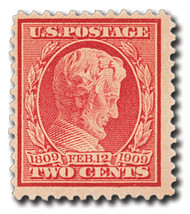The Fascinating World of Bluish Paper in Postage Stamps
Posted by Mystic Stamp Co. on 26th Jun 2024
Postage stamps, those small pieces of paper that facilitate communication across distances, have a rich history marked by various printing techniques, designs, and materials. Among the myriad of factors that contribute to a stamp’s uniqueness and value, the type of paper used holds a significant place. One intriguing variety is bluish paper, which has a storied past in the world of philately.
What is Bluish Paper?
Bluish paper, as the name suggests, has a distinct bluish tint. This hue is not due to any special ink or dye but rather the paper's composition. Historically, this type of paper was produced by incorporating a certain percentage of rag content—typically 35%—into the pulp used to make the paper. The rags, often sourced from worn-out cotton or linen textiles, contained blue fibers that imparted a bluish tint to the paper.
The Origins and Significance
The use of bluish paper is closely linked with specific periods and circumstances. One of the most notable instances is its use in the United States during the early 20th century. Around 1909-1910, the U.S. Post Office Department experimented with this paper to improve the quality and durability of stamps. The period saw significant shifts in paper supply and demand, leading to such innovations.
Bluish paper stamps are highly sought after by collectors for several reasons:
- Rarity: The production of stamps on bluish paper was limited, making them relatively scarce.
- Historical Context: They represent a fascinating period in philatelic history when postal authorities were exploring different materials to enhance stamp quality.
- Visual Appeal: The bluish tint adds a unique aesthetic dimension, distinguishing these stamps from their contemporaries.
Identifying Bluish Paper Stamps
Identifying stamps printed on bluish paper can be a meticulous process. Collectors often use several methods to confirm the paper type:
- Visual Inspection: The most straightforward method involves examining the stamp under natural light to observe the bluish tint.
- Magnification: Using a magnifying glass or microscope can help identify the blue fibers embedded in the paper.
- UV Light: Some collectors use ultraviolet (UV) light to highlight the paper's distinctive characteristics, although this method is less commonly definitive for bluish paper.
Notable Bluish Paper Stamps
Several U.S. stamps issued during the early 1900s are renowned for their bluish paper. Some of the notable examples include:
- The 1909 Washington-Franklin Issues: A series of stamps featuring portraits of George Washington and Benjamin Franklin. The bluish paper varieties of these stamps are particularly prized.
- The 1909 2¢ Lincoln Stamp: This stamp, issued to commemorate Abraham Lincoln’s birth centennial, is another significant example.
Collecting and Preservation
For philatelists, bluish paper stamps represent a special niche within stamp collecting. Acquiring these stamps often involves careful research and investment. Preservation is crucial, as the historical value of these stamps necessitates meticulous care:
- Storage: Stamps should be stored in acid-free albums or mounts to prevent deterioration.
- Handling: Using tweezers or tongs to handle stamps can avoid oils and dirt from fingers, which can damage the paper.
- Climate Control: Maintaining a stable environment with moderate humidity and temperature helps in preserving the paper’s integrity.
Conclusion
Bluish paper in postage stamps is more than just a material variant; it is a window into the history of postal innovation and a testament to the evolving nature of stamp production. For collectors, these stamps offer a blend of rarity, historical significance, and aesthetic appeal, making them a prized addition to any collection. Whether you are a seasoned philatelist or a curious beginner, the allure of bluish paper stamps is a fascinating aspect of the broader philatelic world worth exploring.

